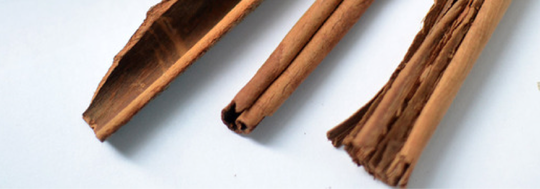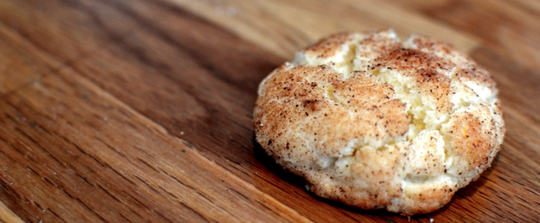
Artificial vs. Natural: When Flavors Collide (An MSG Recap!)
Posted by ![]() Jonathan Soma on mar 29, 2012 under Class Recap
Jonathan Soma on mar 29, 2012 under Class Recap
Tuesday night was Masters of Social Gastronomy: The Flavor Battles. Vanilla extract and Ceylon cinnamon squared off against artificial vanilla and ersatz cinnamon (née cassia) in snickerdoodle form: but which cookie took the cake?
First, a bit of history.

VANILLA
Vanilla is an orchid and, in the tradition of orchids, is quite tempermental. It refused to grow anywhere but its native Mexican soil thanks to the presence of a specific bee that pollinated it. In 1842, though, everything changed; a slave boy figured out how to hand-pollinate the orchid and an industry was born overnight.
But that didn't make things easy. To get a sweet and tasty vanilla bean out of the plant, the process goes a little something like this:
- Pollinate the orchid by hand. The orchids are only open during random times of the day, though, so you need to wander around the fields making sure you get them all.
- Wait and wait and wait. 6-9 months later the orchid finally gets around to making a fruit. "9 month gestation, just like a human baby!" every source proudly proclaims.
- Kill it. This just means you put it in very hot water for a few minutes. Definitely the best-named step of the process.
- Sweating and sunbathing. For the next 2 weeks you'll lay the beans out in the sun during the day, then wrap them up tight in blankets at night to "sweat." At this point you stop making human baby comparisons.
- Dry it. 1 month of humidity-controlled waiting.
- Wait some more. Now you get to wrap it up in wax paper and put it in a box. For 2 whole months, so it can make friends with other vanilla beans.
After all that babying, they're finally shipped off to God-knows-where to be dealt with. You're free to soak them in alcohol (to make extract) or use them whole (to be fancy) or sell them for a huge markup at Whole Foods.
In addition to the fact that the care needed to produce vanilla beans makes them far more expensive than, say, a cumin seed, demand for vanilla is ten times what is actually produced. So, we have a high-maintenance product with an absurdly high demand, and thus we arrive at the end of the road: vanilla is expensive.
Enter vanillin. Scent and flavor are, when you get down to it, nothing but chemicals. When we talk about actual real-life non-imitation vanilla flavor, what we're really talking about is a bunch of molecules that hop off of a vanilla bean and make their way into our nose.
The kingpin chemical of all of these is vanillin. Sure, vanilla has plenty of other odor molecules, but vanillin is about 95% of the scent. And, thanks to technology, you can make it cheaply.
The thing is, whether you're pulling vanillin out of vanilla beans or constructing it out of petroleum in a lab, a vanillin molecule is a vanillin molecule is a vanilin molecule. Exact same molecule, exact same scent, just with a different provenance (and price point).
And so MSG stood divded. Sarah felt that the extra nuance brought by the other odor chemicals in vanilla beans was worth the expense, while I am a cheapskate who thinks vanillin is Close Enough.

CINNAMON
We've talked about cinnamon before, but the quick explanation is such: ground cinnamon is a lie.
The stick version of cinnamon you're familiar with is something called Indonesian cinnamon, and it's frankly pretty terrible. Not much essential oil content means not much flavor; its saving grace is that it's nice and hard and withstands packing and shipping and being put in hot toddies.
Ever tried to grind up a quill of cinnamon? Impossible. Impossible. Impossible. It will ruin your arm or your grinder, and Industry agrees, which is why the ground "cinnamon" they sell you in a supermarket is actually a different spice called cassia.
Cassia has plenty in common with cinnamon, in that it's historically been considered a relative of cinnamon and has the same sorts of oils and all that, but it isn't cinnamon. I think the US is the only country where it isn't sold labeled as "cassia," and if you're curious you can find it whole in Chinatown.
The thing is, though, there's actually a third type of cinnamon. It's called Ceylon cinnamon, and it's what scientists talk about when touting the Health Benefits Of Cinnamon. It has a pleasant nuanced flavor and doesn't pack the Red-Hot style punch of cassia. Read more on our previous post on the topic.
MSG, once again, divided: I, of course, love the Red-Hot style punch of cassia, while Sarah was more one for subtlety. There was only one way to settle this.

THE BATTLE
So Sarah nobly cooked two batches of snickerdoodles: one of real anilla and Ceylon cinnamon and one of vanillin and cassia. After MSG's Storytime we handed the two batches along with voting slips and left the cookies to their own devices. Neither the people eating them nor the people passing them out knew which were which, so we had a pleasant double-blind situations going on.
And so we waited.
And I talked.
And we waited.
And then, 75 votes later, we had our clear champion. By a fierce 2:1 margin, the imitation cookies won the day. Just like Sarah and I both figured.
I originally believed that the nuance of natural vanilla and Ceylon cinnamon would be destroyed by the heat of the oven, but the difference was even simpler than that: people just preferred the strong, one-note flavors of vanillin and cassia. It wasn't that the nuance was lost in the cookies, it was that the nuance was lost on the tasters.
With the Real Food Is Good world in shambles, we all hung our heads, took some shots, and made our way home. I doubt the artificials will win next time, though: April's Masters of Social Gastronomy topic is fake meat.
Tagged with Masters of Social Gastronomy chemistry science artificial flavors





Comments